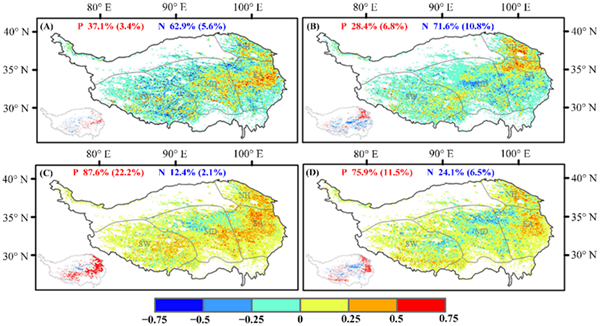Study Revealed Phenological Changes and Driving Forces in Qinghai-Tibet Plateau Vegetation
2022-02-21
Researchers from Xinjiang Institute of Ecology and Geography of the Chinese Academy of Sciences revealed the phenological changes and driving forces in Qinghai-Tibet Plateau vegetation.
The results were published in Remote Sensing, entitled “Phenological changes and driving forces in Qinghai-Tibet Plateau vegetation”.
Climate change has strong impact on the environment and biology of the ecosystem. Vegetation plays irreplaceable role in regulating the biosphere and atmosphere. Vegetation phenology can better reflect the dynamic response relationship between vegetation ecosystem and climate change. Therefore, the study for vegetation phenology has become one of the hot topics and attracted widely attention.
In order to provide theoretical basis and data support for the rational protection and sustainable development of the ecological environment in the Qinghai-Tibet Plateau. The researchers used the GIMMS3g NDVI data set (1982-2015) to analyze the vegetation phenological changes and driving forces in the Qinghai-Tibet Plateau vegetation.
The research results show that the interannual variation of the starting of growing season (SOS) and the length of growing season (LOS) in Qinghai-Tibet Plateau are large, and from the trend change of SOS, the eastern and central regions generally show 0.19day an ahead of schedule. For the end of growing season (EOS), 98.60% of the study area showed a lagging trend.
Researchers also found the pre-season precipitation was the main factor affecting the change of SOS in the northeastern, while pre-season temperature and precipitation together led to the lag of EOS in the northeastern; the pre-season precipitation in April or May was the main factor driving the change of SOS. The difference and diversity of vegetation types in the Qinghai-Tibet Plateau led to the complexity of vegetation phenology.
Article link: https://www.mdpi.com/2072-4292/13/23/4952

Fig. 1 Trend changes in different periods of the phenological growing season

Fig. 2 The correlation between vegetation phenology and pre-season climatic factors



